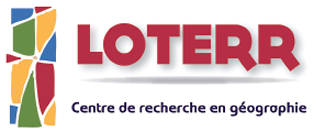The LOTERR has been established on 1st January of 2013 by uniting the two former geography laboratories CEGUM for the University Paul Verlaine of Metz and CERPA for the University of Nancy 2. With 31 permanent staff members, it is organized into several areas of geography and planning following the main idea of transition: physical geography, particularly represented with hydrology and climatology; human geography with spatial and landscape analysis and planning with all its challenges and usages.
In a world of transformations where territories have to be perceived following multi-level and multi-temporal logics, LOTERR researchers analyse territorial transitions in areas such as:
- Hydrology of water catchments (especially floodings and droughts) and climate change;
- Agricultural and forest systems;
- Reconversion and heritage, particularly of industrial and military kind;
- Cross-border spaces and interterritorial;
- Commercial activities and attractiveness of city centres;
- Planning cultures and simulation games
The LOTERR has developed a technical platform of data and image collection. This platform consists of four types of measurements:
- Stations to observe the flow rates of several watercourses in the Rhine-Meuse basin (small network of doze complementary stations to the Vigicrues network and follow-up of the low-flows managed by the DREAL Grand Est);
- Meteorological stations on the territory of Metz Métropole (REMTHAM network) – in particular to measure the Urban Heat Island phenomenon;
- Inclined air photographies, database of 30,000 photos from 1980 until today;
- Images taken by a drone photographies and thermal images) – the LOTERR has obtained two drones in the framework of CPER Ariane and owns an unmanned vehicle.
LOTERR researchers rely on multiple methodologies to analyse transitions, both quantitative (hydrological and climatological measurements and spatial analysis of populations) and qualitative (landscape analyses, interviews, focus groups and simulation games).
Primarily studied territories: Lorraine, Grand Est of France, Greater Region, Europe (United Kingdom, Germany, Spain, Poland, Romania), Morocco, Bolivia.




